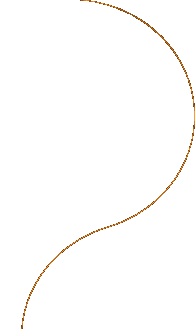


Press Release
Dance, The Spirit of Cambodia Makes 12-City National Tour Summer-Fall 2001
Project from Royal University of Fine Arts, Phnom Penh marks first major tour from Cambodia in over a decade
Project from Royal University of Fine Arts, Phnom Penh marks first major tour from Cambodia in over a decade
Dance, the Spirit of Cambodia: a project of the Royal University of Fine Arts, Phnom Penh will present classical and folk dance and music from Cambodia during its 12-city national tour August 11-September 29, 2001. This coast-to-coast trip by the 41-member troupe marks the first time in more than a decade that the living traditions of Cambodian music and dance have toured in the U.S.A. Highlights include week-long performance engagements at Jacob's Pillow Dance Festival (Becket, MA) and New York City's Joyce Theater. Following engagements in the midwest and west, the tour concludes at the Kennedy Center. (See attached complete tour schedule.)
This project, initiated and produced by the New England Foundation for the Arts (NEFA) in partnership with Asia Society and Lisa Booth Management, Inc., is a public celebration of more than a decade of documentation, preservation and cultural exchange fostered between the Royal University of Fine Arts, U.S. presenters, funding organizations, and Cambodian-American communities in order to rebuild Cambodia's cultural infrastructure.
"The central role dance plays in sustaining Khmer culture is profound," says Samuel A. Miller, NEFA's executive director. "Through performances, educational activities, contextual materials and resources, this project will offer audiences vivid opportunities to experience and understand one of the world's great performing arts traditions."
Importance of Culture
Along with the magnificent temples of Angkor, Cambodia's dance traditions are among the world's most luminous and evocative cultural expressions. A medium across time, dance has long served as the bridge between the natural and the spiritual worlds and from one era to the next. As we enter a new millennium, this world-renowned tradition — sustained by the slimmest of margins through the atrocities of the 20th century — is living testimony to the endurance of Cambodia's culture, and a foundation for its future.
Taken together the classical repertory of the court and the popular traditions of Cambodian villages embody much of Khmer civilization. Dance and music are more than cherished theatrical forms. They are a living kinetic history, transferred and enriched from one generation to the next. They make manifest politics and power, instill social and religious practices, and reflect spiritual values.
Today, as Cambodia emerges from two decades of war, poverty, and political instability, its society looks to the rebirth and renewal of these traditions. Dance, the Spirit of Cambodia exemplifies this struggle to reaffirm Cambodia's cultural legacy and share it with a new generation at home and with the world at large.
Historical Background
Cambodia's recent history precipitated a national cultural crisis. After a devastating civil war in the early 1970's and the brutal years of Pol Pot's Khmer Rouge (1975–79) — during which an estimated 1–2 million people died from starvation, disease, forced labor or execution — Cambodia's social, economic and cultural fabric was in shreds. By many estimates, nearly 90% of its artists, intellectuals and educators were killed.
Vietnam's military entry into Phnom Penh in January 1979 brought about the end to Pol Pot's rule, but internal political jockeying and military fighting continued well into the 1980s as Cambodia, with few economic resources, also became a political and military staging ground for power-plays among international rivals. The 1991 United Nations Paris Peace Accords made it possible for more than 350,000 refugees, many of whom had been displaced for 15 years or more, to return to Cambodia. While nominally at peace throughout the 1990's, Cambodia remained plagued by political instability. Now, at the turn of the millennium, the country is experiencing its first real peace in fifty years.
Royal University of Fine Arts
Formally established in 1965 by King Sihanouk, the Royal University of Fine Arts continued a centuries-old tradition of formal training in the arts that dates back as early as the 6th century. Previously the possession of the royal court, Cambodia's classical traditions were now acknowledged as part of the country's modern national identity. A decade-long period of growth was halted when the University, along with every other educational and cultural institution, was closed by the Khmer Rouge in 1975, and Phnom Penh's inhabitants, under forced evacuation, were dispersed to the country-side.
In 1979, having survived by hiding their identities, a handful of professional performers returned to Phnom Penh and immediately put out a call to all artists to return. Cambodia's remaining dancers and musicians responded. In 1980, professional artists reunited for the first time in emotional performances that were at once an agonizing recognition of the loss of life — so many were killed or missing — and a reaffirmation of identity. The School of Fine Arts reopened later that year.
In 1988, the School became the University of Fine Arts, attaining the status of the pre-Khmer Rouge conservatory. In 1990, members of the University toured to the USA, in the first large-scale tour of work from Cambodia since 1971. In 1993, the University was renamed the Royal University of Fine Arts. RUFA's colleges of archeology, architecture, plastic arts, music and choreographic arts issue undergraduate degrees. The college of Choreographic Arts is the umbrella for dance, theater and circus arts majors. Continuing the history of conservatory training, dancers as young as six years of age begin their studies in the time-honored traditions of the form, integrated into a program of academic study.
The process of reconstruction continues to be arduous. Though much has been recovered during the last 20 years, much work remains to be done. Documentation of Khmer dance had been minimal, and many of the few written records, photographs and films that had existed were lost during the Khmer Rouge period. The transmission of knowledge from teacher to student that is the basis of training, interpretation and creation has taken on added significance and urgency. "The past is a crucial link to the present and the well-spring of our future," says Proeung Chhieng, Vice Rector and Dean of Choreographic Arts at the Royal University of Fine Arts and Artistic Director of the 2001 tour. "In the past couple of years, the deaths of some our remaining older teachers has pushed the younger ones to learn and record all they can, as quickly as possible."
Repertory
Repertory for the 28 scheduled public performances on tour will include works from Cambodia's folk and classical traditions along with an extended excerpt from the Reamker dance-drama. "In this first formal tour to the U.S.A. in more than a decade, we have chosen to present a selection of dance styles that have been revived and sustained as the University's programs and Khmer arts in general are renewed," says Mr. Chhieng. Below are descriptions of the works that will be presented.
- Mera, a mythical progenitor of the people who inhabit Cambodia, emerges with her six consorts from stone niches in the ancient Temple of Angkor Wat to delight in the pleasures of a garden in Robam Apsara, an intense, ritualized dance that epitomizes the tension between earthly groundedness and ethereal lightness of the classical form.
- Clanging cymbals, comic antics and call-and-response drums characterize Chhayam, a lively procession still performed at festivals in and through Buddhist temples in Cambodia's villages and cities.
- Solo Opakaw (Instrumental Solo) presents several of Cambodia's traditional wind instruments.
- Long ago, the story goes, there was a king who ordered a hunter to capture a tunsaong. So begins the tale that is the basis for Robam Tunsaong (Wild Ox Dance). With origins in a ritual performed in homage to ancestral spirits by members of the Poar ethnic group of the Kompong Chhnang and Kompong Speu provinces, this dance was re-worked for theatrical presentation as part of the folk repertoire in the 1960s by artists from RUFA.
- Believed to have been performed at the court since at least the reign of King Sisowath in the early 20th century, Robam Makaw includes elements from a sacred and much older dance-drama. The deity Vorachon opens the dance. In gold and resplendent headpieces, goddess of the seas Moni Mekhala and her attendants take the stage manipulating fans representing the shimmering scales of the Makaw, a mythical sea creature.
- A uniquely Khmer version of the Indian epic Ramayana, the Reamker dates to the 16th or 17th century. To this day, this complex tale of love and war comes to life in Cambodia through performances of shadow puppet theater, all-male masked dance-drama, and classical dance-drama. The excerpt presented here, from the classical repertoire, picks up the story with the monkey army of Preah Ream (Prince Rama) preparing for its expedition to the land of the giants to rescue the kidnapped Neang Seda (Princess Sita). Following intrigues and battles, Neang Seda, surrounded by her ladies-in-waiting, undergoes a trial by fire to prove her fidelity to Preah Ream. She is proven innocent and all depart in triumph.
Contextual and Interpretive Programs
Nationwide, the U.S.A. is home to 250,000 Cambodians, but Khmer culture, its history and contemporary expressions remain largely unknown here. Creating a context for the presentations is a priority of the project, one that will be made evident in the performances themselves and in a range of educational and community activities. Materials will be made accessible through a specially developed web site — www.asiasource.org/dancecambodia — to be launched on April 16.
In addition to performances, presenting venues will host educational programs to include workshops and lectures, demonstrations and classes. Some of these events will take place while the project is in residence; others will be held prior to the project's arrival in each city.
The project web site will include up-to-date performance information, repertory descriptions, press releases and other information regarding the tour along with commissioned essays, a bibliography of books, periodicals, films and resources as well as links to other Cambodia sites.
Project Network
Dance, the Spirit of Cambodia: a project of the Royal University of Fine Arts, Phnom Penh is produced by the New England Foundation for the Arts in association with Asia Society and Lisa Booth Management, Inc. Performance programs have been created and will be performed by members of RUFA under the artistic direction of Mr. Proeung Chhieng, Vice Rector and Dean of Choreographic Arts. Toni Shapiro Phim, a leading scholar on Cambodian performance and co-author of the recently published Dance In Cambodia (Oxford University Press), serves as the project's advisor; Fred Frumberg is Production Coordinator; Clifton Taylor is Lighting and Production Designer.
Leadership from the Asian Cultural Council (ACC), a foundation whose programs in support of cultural exchange with RUFA during the past six years have helped revitalize and expand the university's teaching, research and performance programs in dance and music, has been a catalyst for the project. "The upcoming tour is quite unique in that it has been conceived and developed as a joint cooperative effort among several key cultural institutions in Cambodia and the U.S.," says Ralph Samuelson, ACC's director. "The tour offers truly significant benefits to the university and its artists, and to American audiences. It will strengthen ties between artists in Cambodia and those Cambodian artists resident in the United States, as the future of the art form depends upon their work together."
The Project is made possible with funding from the Asian Cultural Council, National Dance Project, the Doris Duke Charitable Foundation, the National Endowment for the Arts, Rockefeller Foundation, and the Fund for Folk Culture (list in formation).
